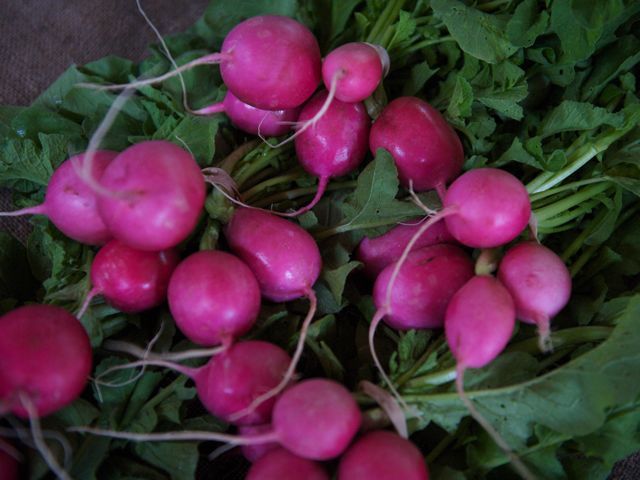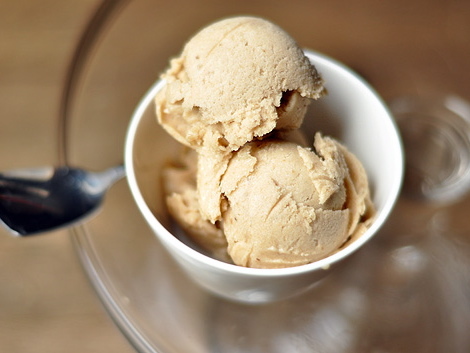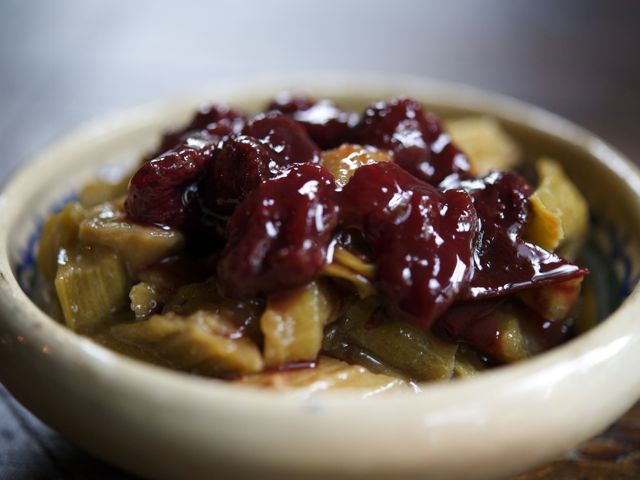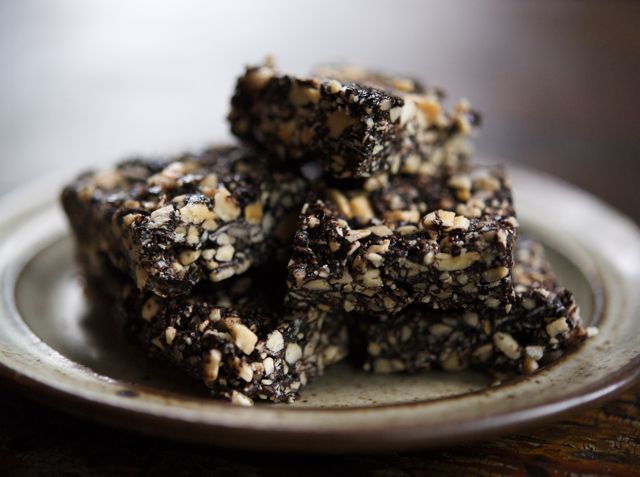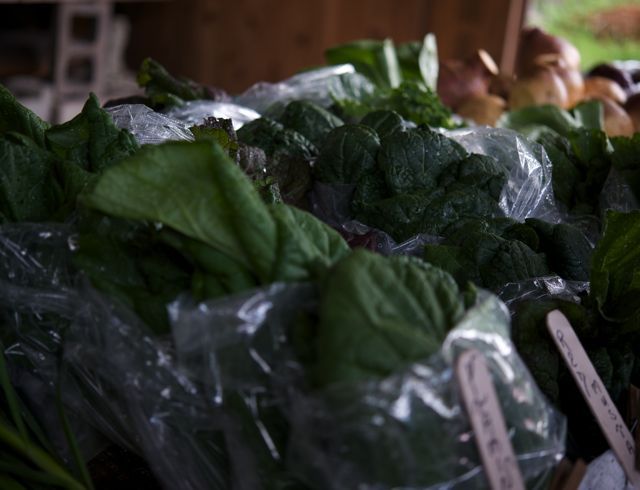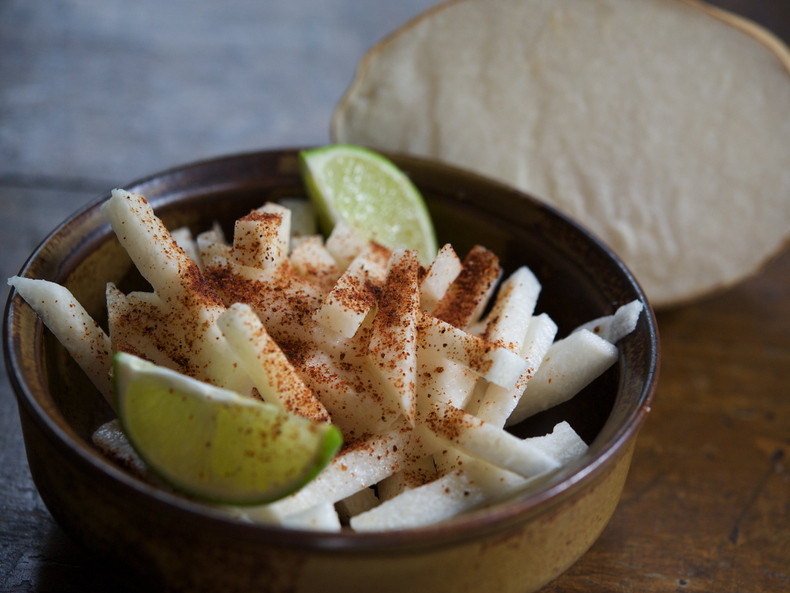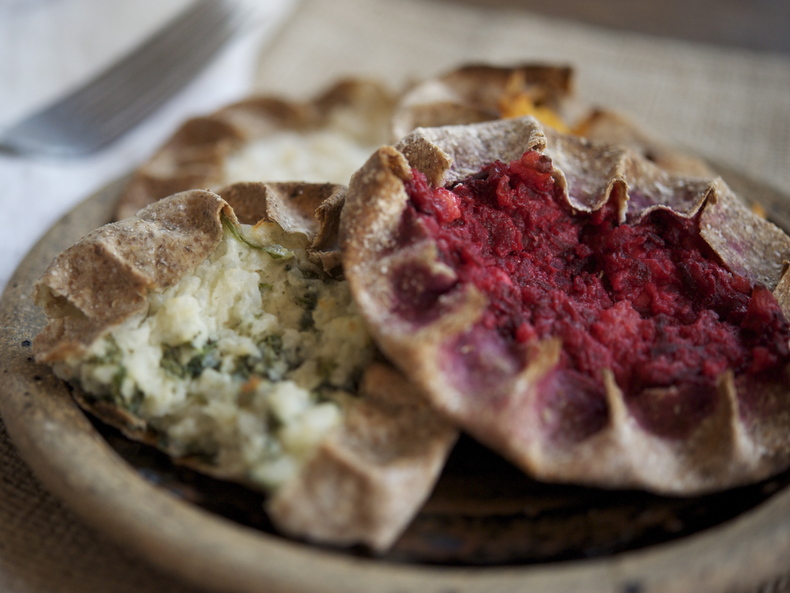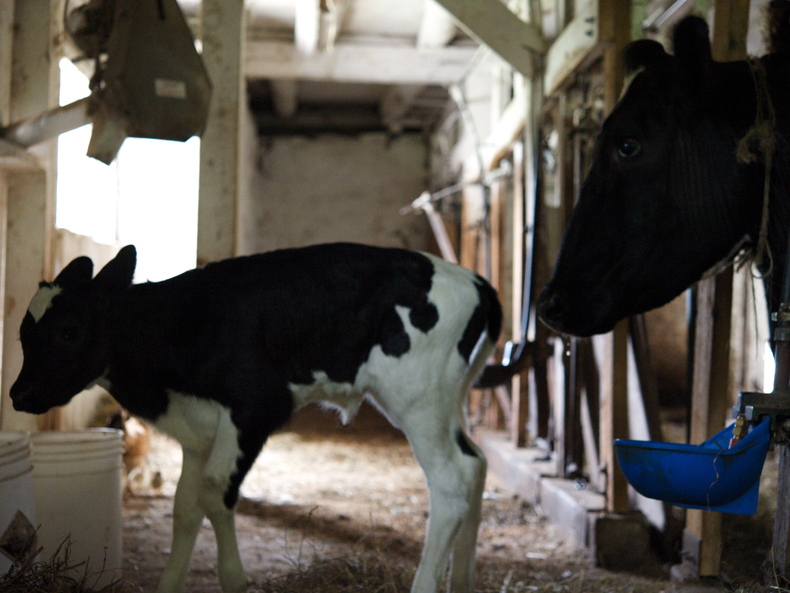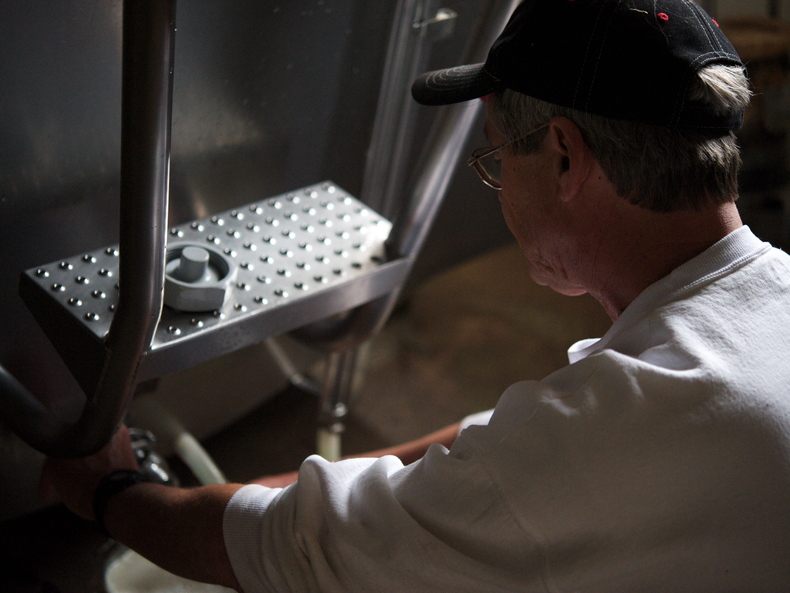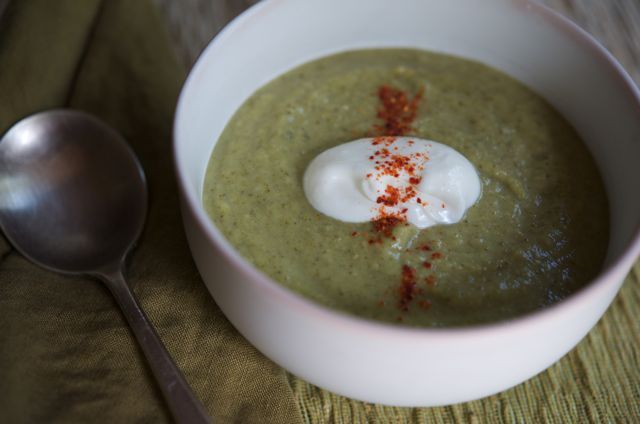A radish is a beautiful thing, something like a baby turnip with a bite. I'm sure you're already familiar with the classic European way of eating them with slightly softened butter and a sprinkling of coarse sea salt. What could be better? In his seminal cookbook, Nose to Tail Eating, British chef Fergus Henderson suggests that you eat your radishes in this manner and then follow that with a light salad made of their greens tossed with a vinaigrette. Sort of a vegetarian nose-to-tail approach, no? Thin slices of dark bread, buttered and layered with radishes and sea sat, make a fantastic sandwich. And I love an early summer salad of sliced radishes, blanched English peas and chopped preserved lemon, tossed with a couple of tablespoons of creme fraiche and maybe a chiffonade of mint. BUT, perhaps you have an aversion to radishes. Too strong you say; or maybe even too watery or too strange. For those of you in this camp, and any others who would like to branch out in new radish directions, may I recommend the delicious braised radish?
Read More...
Twitter @glutton4life
6.19.10 Bananarama
I know, I know. Another creamy, icy, indulgent treat. Don't be mad at me. It's that time of year. Besides this rich and delicious ice cream is completely dairy-free and can be made with no added sweetener. Its secret ingredient? Bananas! I happen to be a huge fan of banana ice cream, so when my sister-in-law forwarded me a year-old link to this recipe on Apartment Therapy's The Kitchn, I was excited to try it. Theirs called simply for frozen bananas whipped in a food processor, but I added a few extra ingredients in very small quantities—maple syrup, lemon juice, crème fraîche and cinnamon. Feel free to customize it according to your own flavor fetishes, but consider peanut butter, chocolate, cardamom, coconut milk and lime (but probably not all together). And remember, bananas are a great source of potassium, magnesium and vitamin C. They're also full of fructooligosaccharide, a prebiotic that helps colonize your intestine with good bacteria. As if you needed another reason to try this...
Read More...
Read More...
6.17.10 Victoria, Victorious
Rhubarb abounds at the moment. Driving along the little country roads out here, you see many a luxuriant patch with broad, lofty, ruffly green leaves and the occasional gorgeous flower soaring above. The markets are full of the celery-like stalks in shades that range from rose to raspberry. I'd been feeling a tad deficient for having produced such adamantly green rhubarb, but then I looked up the variety we planted and it turns out Victoria rhubarb is meant to be green! Naturally, it's not the one most commercially favored, since everyone is attracted to the gaudy red stuff, but I'm now quite proud of my green stalks with the discreet hint of pink at the very base. It tastes just as wonderful, and I find the color makes a lovely counterpoint to the vivid strawberries with which it's so often paired. Food52 continues to be an inspiration (even though my strawberry-fennel ice cream, nominated last week, did not win—#$@$%#!), and I think you'll love this simple but flavorful poached rhubarb that I've topped with strawberry preserves that deliver a bit of heat. Make it now, before all that beautiful red (or green) rhubarb has seen its best days.
Read More...
Read More...
6.15.10 Chew On This
Growing up in Santa Cruz, still a hippie mecca to this day, I was exposed early on to all manner of what used to be known as "health foods"—sprouts, carob, smoothies, kefir, whole grain sourdough bread. Maybe that's why I still enjoy trawling about crunchy food co-ops, peering at bags of sesame sticks, bins of millet and containers of powdered spirulina. There is almost always an assortment of carob-covered items (raisins, almonds, ginger) and sometimes these little nuggets, studded with lots of goodies. I love carob's dark, earthy richness; its mild bitterness and distinct winey taste hold up to chocolate's complexity. Carob is a species of flowering evergreen tree in the pea family that is cultivated for its edible seed pods, which are also known as "St. John's bread" because John the Baptist was said to have subsisted on them in the wilderness. Supposedly they also fed Mohammed's armies. The pod can be elongated, compressed, straight or curved and takes a full year to develop and ripen. It is the dried and sometimes roasted pod that we eat, and not the peas or seeds inside. These are called locust beans and are used for animal feed or as the source of locust bean gum, a thickening agent that is an ingredient in many processed foods.
Read More...
Read More...
6.14.10 Green Light
Spinach plucked fresh from the garden is one of the great joys at this time of year. Thought to have originated in ancient Persia, Arab traders carried spinach into India, from where it was introduced to China. The earliest record of spinach is in Chinese from around 647 AD. When Catherine de’Medici, born in Florence, became queen of France, she insisted that spinach be served at every meal. That’s why, to this day, dishes made with spinach are known as "Florentine."Highly nutritious and full of antioxidants, spinach is a rich source of vitamin A, vitamin C, vitamin E, vitamin K, magnesium, manganese, folate, betaine, iron, vitamin B2, calcium, potassium, vitamin B6, folic acid, copper, protein, phosphorous, zinc, niacin, selenium and omega-3 fatty acids. No wonder it made Popeye so strong! Consider this: a 180 gram serving of boiled spinach contains 6.43 mg of iron, versus the 4.42 mg in a 170 gram ground beef patty. However, spinach contains oxalic acid, which binds with iron and prevents its absorption, so it is best eaten with foods high in vitamin C and calcium that help it be absorbed by the body. These include meat, fish, poultry, dairy, citrus, cantaloupe, strawberries, broccoli, brussels sprouts, tomato, potato, red peppers and white wine. The dark green, crinkly spinach is called Savoy; there is also a kind with flat, smoother leaves; and there is a hybrid type that is somewhere in between. To maximize its nutrients, spinach is best eaten when fresh, lightly steamed or blanched. But I also love it creamed (which means somewhat more cooked down) and raw in salads.
Read More...
Read More...
6.10.10 Crunch Time
I learned all kinds of crazy things about my beloved jícama as I was doing a little research for you. The word jícama derives from the Nahuatl “xicamatl" for a native Mexican vine, although what we eat is the plant's tuberous root. It’s from the genus Pachyrhizus, commonly referred to as "yam beans," which is yet another name for jícama. The roots can grow to be quite large, although when bigger than a canteloupe, they begin to convert their sugars into starches, becoming dry and woody. In choosing a jícama, look for medium-sized, firm tubers with no wet or soft spots. It will keep under refrigeration for up to two weeks, but I learned that optimal storage temperature is between 50 and 60 degrees, under which conditions it will keep for a month or two.
Read More...
Read More...
6.9.10 Condimental: Bubble & Squeak
This is not about that traditional English dish of fried leftover vegetables. I'm actually referring to the lovely sounds that emerge from the jar when you make your own sauerkraut. More broadly, in fact, I want to tell you about the joys of lacto-fermentation. WTF?! you cry. What is she going on about now?! Yes, it's more of my kooky DIY. But you can't tell me that you don't love pickles. And this is one way to make them that doesn't require all that boiling and canning hassle. This is just you, your vegetables and some free-floating healthy bacteria! Lactobacilli are lurking everywhere, on the surface of all living things, especially anything growing on or near the ground. Put them to your own use and you've got all manner of delectable pickles like kimchi, sauerkraut and half-sour dills. Make no mistake: lacto-fermentation is not the same as pickling in a vinegar brine. I was amazed to see that my sauerkraut was simply salt, caraway seeds and cabbage; a dry mixture that, over a period of days, became juicy and sour and fragrant.
Read More...
Read More...
5.28.10 Finnishing School
I love discovering new things. Isn't that one of the great joys of life? I know it's a bit of a cliché, but retaining a childlike openness really does keep you young at heart. II never want to turn into one of those cranky old people afraid to try anything new, no matter how many painful setbacks my life hands me. You probably think I'm buttering you up to eat something like monkey brains, right? Worry not. I just want to introduce you to Finnish ryes. My Finnish friend Maija, a very talented writer, does a little side business in these lovely pasties (not a typo, the plural of pasty!). They are based on a traditional recipe from Karelia, a region in Eastern Finland and Western Russia, using flour made mostly from whole grain rye (plus a tiny amount of wheat). Rye flour has a low glycemic index and a high amount of dietary fiber and protein, so these make for a healthy, nourishing snack. Maija and her baking partner have come up with a selection of flavors that pay tribute to tradition but also appeal to the rather more rarified tastes of New Yorkers. This includes the most basic rice-filled version, as well as beet-feta, spinach-garlic and sweet potato-caramelized onion-rosemary. The ryes can be eaten at room temp or pop them in the oven (even better). I enjoyed mine with a fried egg on top. Look for them at the Park Slope Greenmarket (5th Avenue) on Sundays through the fall.
Read More...
Read More...
5.25.10 Dairy Queen
Meet Louise, an enormous black milk cow who'd just given birth to this still-trembling little calf on Saturday morning when we stopped by our small local farm to pick up some raw milk. They're kind enough to sell it to us right from the cow. Well, pretty much. It's legal in New York, but only if you buy it directly from the farm. (It's banned outright in New Jersey, and available at retail in Connecticut.) You'll need to bring your own container—I use big glass jugs. If this recent article in New York magazine is any indication, raw milk is gaining in popularity as people begin to understand more about its nutritional value and appreciate its wonderful taste. (Old-style delivery services will bring it right to your door!) My mother-in-law was absolutely horrified at the idea of us drinking raw milk, and that's a testament to how this country has been brainwashed into believing that industrialized food is cleaner and safer. But in fact, high-heat pasteurization and homogenization do a great disservice to the quality and value of the milk we drink. And most cases of salmonella associated with milk in the past decade have been from pasteurized products. Perhaps, like I did, you shun milk altogether? As recently as a couple of months ago, I was posting about all the alternatives—soy, almond, rice, hemp. Now that I've learned about how the high-heat and chemical extraction processes essentially damage these foods, I really can't recommend you consume any of them on a regular basis. I know, I know, the ground beneath us is always shifting. But I feel much more empowered now that I have begun to do my own research (forever indebted to Sally Fallon of Nourishing Traditions) and really understand the science behind my food choices. Don't despair, there's still plenty of good stuff to eat.
Read More...
5.22.10 Chill Out
I got some free broccoli last week when my friend Laquita's husband Tim was on a photo shoot where they used 30 cases of the stuff to create a "forest." They dropped off a huge bag and I had to think fast. It was a hot day and I decided to make a cold soup. As we slide into warmer weather, cold soups make great lunches, snacks and first courses, and they're an ideal way to showcase fresh vegetables. Once the tomatoes are ripe it will be all about gazpacho, but for now broccoli, asparagus, spinach, sorrel and pea all make brilliant green soups. The basic steps are simmer the vegetable (or a combination) in chicken stock or water; puree it in a food processor; stir in some buttermilk, yogurt or cream (or a combination); jazz it up with some ground coriander, fresh mint or basil, lemon zest, vinegar, etc; and chill. If it needs thinning, use water, stock or more cream. You don't need to overthink this. I served mine garnished with a dollop of creme fraiche and a sprinkle of piment d'Espelette.
Read More...
Read More...






